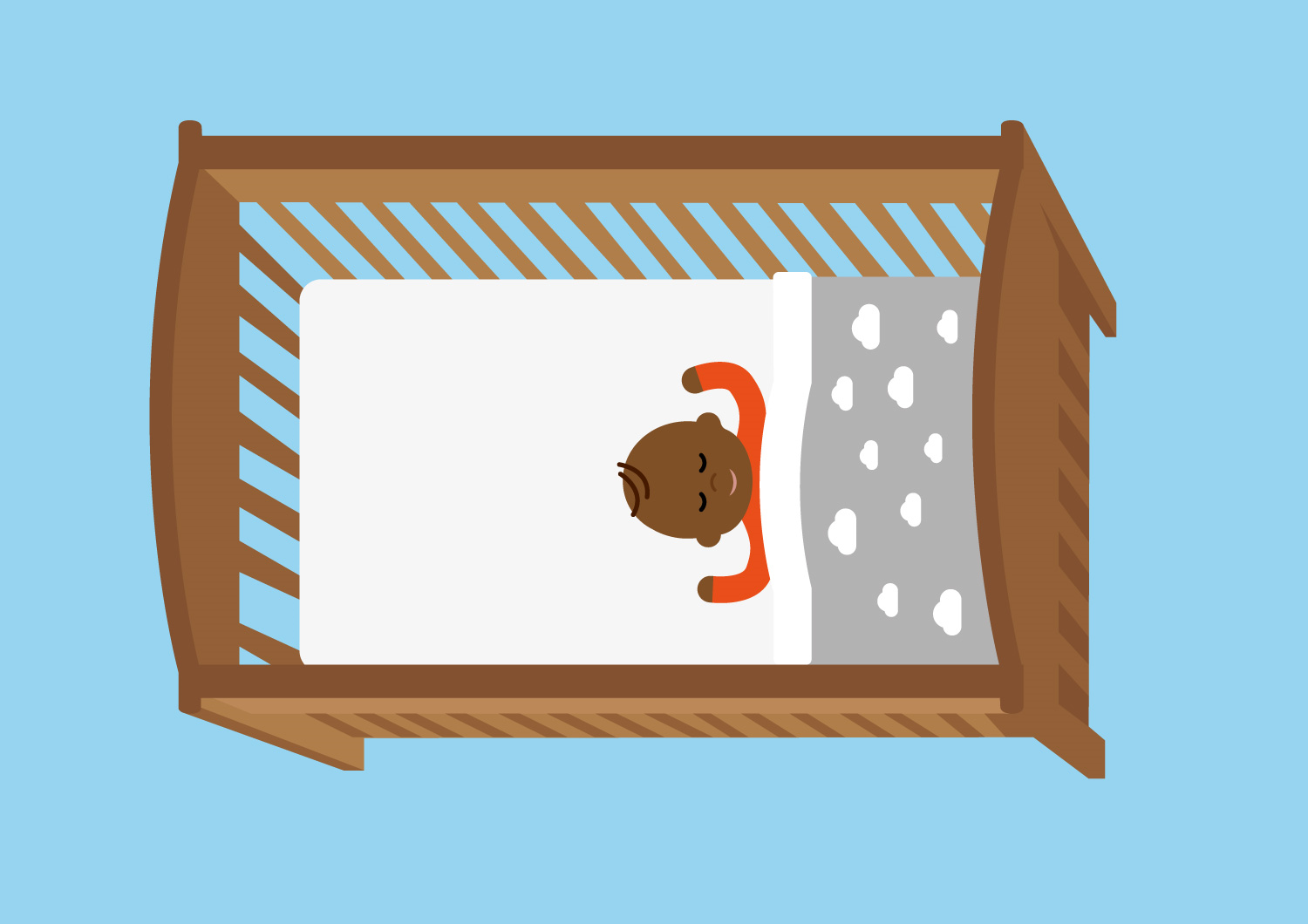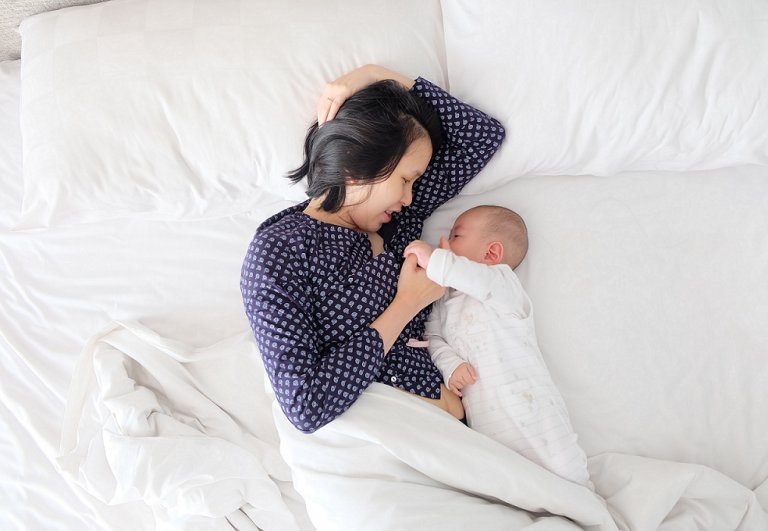
Once you are home with your baby you may be feeling overwhelmed with the amount of information you have been given, and the steep learning curve you are on with a new baby.
One of the most important pieces of information you need to pay attention to is how to make sure your baby sleeps safely.
The Lullaby Trust have produced guidance on safe sleeping practices for babies which can be viewed on their website. Their top 3 recommendations are:
Breastfeeding
Breastfeeding gives babies some protection against Sudden Infant Death Syndrome (SIDS)
Even if you can only breastfeed for a few days, this is still beneficial and offers some protection. The Department of Health and Social Care recommends breastfeeding for as long as possible, ideally exclusively for the first 6 months.
After 6 months, breastfeeding is encouraged with the addition of suitable weaning foods for as long as the mother and baby want to continue breastfeeding.
For further information about introducing solid foods see NHS Start 4 Life and First Steps Nutrition Trust.
Basic equipment needed – keep it simple – keep it safe
The choice of sleeping products on the market can feel overwhelming – it’s best to keep it simple.
You may also need a suitable car seat.
The essential equipment you need to keep your baby safe:
Choosing baby products
When choosing products for your baby, check the following:
British Standard does not mean that a product helps to reduce the chance of SIDS, it just guarantees a certain level of general safety (e.g. will not fall apart or set fire easily).
You should also carefully follow the manufacturer’s instructions for any product you buy and contact the manufacturer directly with any questions.
Advertising can be very misleading and not all products on the market are safe for babies.
Research by the Lullaby Trust shows that 41% of parents have or intend to buy baby sleep nests and pods which don’t comply with safer sleep guidelines.
Watch a video about how to how to choose safe sleeping products on the Lullaby Trust website.
Sleeping position
Babies placed on their tummy to sleep have been found to be at 6 times greater risk of SIDS compared to a baby placed on their back.
Side sleeping also increases the risk.
No research has found any increased risk of choking for babies lying on their backs.
Babies with reflux DO NOT need to be on their front.
Seek medical advice if you feel the position your baby is sleeping in is affecting their health. This decision should not be made by families alone.
For the latest evidence based information on baby sleeping bags, and room temperature see The Lullaby’s Trust Product Guide
Car seats
Do not let your baby routinely sleep in a car seat when at home. When you arrive back from a journey, remove your baby from their car seat and place them in their cot or Moses basket.
On long car journeys, stop for breaks so your baby is not in the car seat for prolonged periods (some manufacturers recommend a maximum period of 2 hours in car seats) and make sure your baby is dressed in clothing suitable for the in-car temperature.
View the Lullaby Trust’s factsheet about car seats for more detailed information.
Visit the Lullaby Trust website for important information about slings and swaddling.
Dummies/pacifiers
Some research suggests that it is possible that using a dummy when putting a baby down to sleep could reduce the risk of SIDS. If you wish to use a dummy, then wait until breastfeeding is well established (about 4 weeks old).
Stop giving a dummy to your baby to go to sleep between 6 and 12 months. View the Lullaby Trust’s leaflet on dummies and pacifiers for more in depth information.
Co-sleeping
If you are thinking of co-sleeping, watch this video from the Lullaby Trust for vital safety information.
Parents may choose to co-sleep with their babies, especially if breastfeeding.
This means that their baby shares the same adult bed for most of the night, and not just to be comforted or fed.
If you do decide to co-sleep, it is important that you do this safely and are aware of the circumstances when you should not co-sleep.
Bed sharing increases the risk of SIDS and is particularly dangerous if:

You should never sleep together with your baby if any of the above points apply to you.
You must be especially careful when giving feeds that you are not in a position where you could both fall asleep in the bed together.
The safest place for your baby to sleep for the first 6 months is in a separate cot or Moses basket in the same room as you day and night.
Visit the Lullaby Trust website for more information on co-sleeping.
Health visitors are there to support and help you to make safe, informed choices that suit your family. Please feel able to discuss your safe sleeping concerns openly with your health visitor.
Useful websites
The Lullaby Trust website provides all you need to know on safer sleep advice
Institute of Health Visiting – safe sleep for your baby
Basis – Baby Sleep Info Source website provides information for parents who want to make informed choices about infant sleep and night-time care
The NHS website provides information about reducing the risk of sudden infant death syndrome
Safe sleeping leaflets are available in a variety of different languages from the Lullaby Trust
